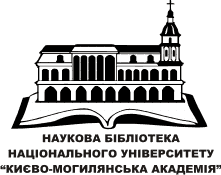KEY TERMS
- Details
- Created: Monday, 20 November 2017 12:24
- Hits: 2525
 sSCIENTOMETRICS - KEY TERMS
sSCIENTOMETRICS - KEY TERMS
Choosing a high-referenced document
As the documents citation level depends on scientific field, and on the fact that older documents get cited more, procedure of choosing a highly referenced document takes this into account. The first step is to count the number of documents quoted at different levels of citation, and to create the delineation for each scientific field and each year. These delineations for each scientific field and for each year are used to determine the limits of selection of a certain part of documents.
Criteria for success
The citation levels that are characteristic for some particular scientific field and year are used for all documents in the magazine and are intended for the selection of high-cited documents. The citation threshold is determined on the basis of the citation distribution by selecting a specified part of the documents for each year and the scientific field. The threshold is determined by the content in the column "All years" in the table of key percentages.
Hight-referenced documents (Essential Science Indicators)
Typically, a document citation reaches the highest point in the second, third, or fourth year after publication, but some documents continue to be cited for many years. Recognition of some documents takes place much later than their publication. The document citation level depends on the document type, scientific field and topic. For example, documents about discovery may start to be cited early and often, but then the citation rate will decrease as other articles on the same topic appear. Citation of documents, that describe methods and techniques increases gradually over several years, while methods are distributed in the field of their use and justify their purpose.
Included magazines
The number of citations is determined on the basis of collections of journals in 22 scientific areas. Scientific areas are determined by the unique grouping of journals, with each journal referring exclusively to one scientific field. The interdisciplinary sciences can include such journals as "Science and Nature", which are put in the classification as articles, and shall be located in the relevant scientific fields. This should be kept in mind during the analysis to provide data to individual scientists, organizations, countries, territories, for the purpose of ranking.
Period of time required to determine the number of citations
The time period for the calculation is 10 years, plus the current year is taken into account (these data are updated every two to four months). This means that any documents for the period of 10+ years can be cited in any element during the same period of time. Citation from all sources starting from the year of publication and up to the current time are taken into account. Years with no data (actual years when elements were uploaded into the database - not always consistent with the year of publication) are used to define time limits.
Types of included elements
All materials are divided into general scientific articles, review articles, conference materials, and research materials. Letters to the editor, correction messages and annotations are not counted. Only articles, magazines, and other materials indexed in Thomson Reuters are taken into account.








